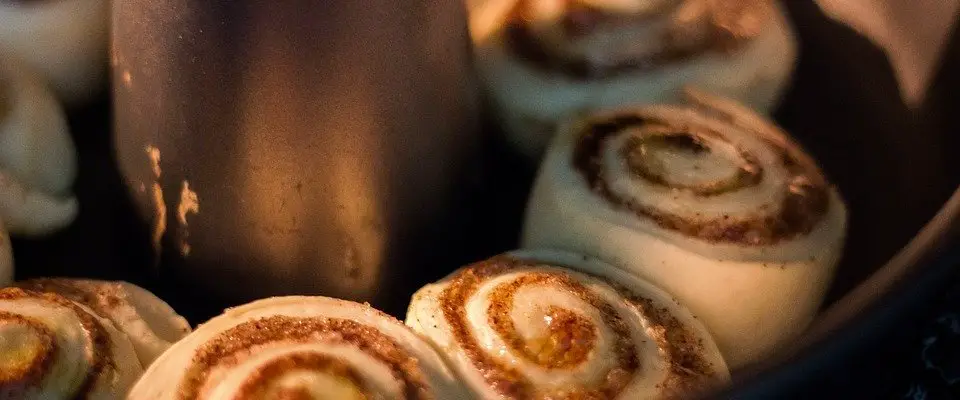Have you ever had the experience of suddenly hating the food you once loved? Well, it turns out there is a term for it: conditioned taste aversion.
When I was around nine years old, I used to be obsessed with potatoes; I used to eat them boiled, fried, and baked. One day, my aunt brought home a basket full of potatoes grown from her little farm. Knowing how much I love potatoes, she started cooking them—half of the potatoes were baked, and the other half was boiled. I was so excited—in fact, too excited—to eat the potatoes that my aunt had taken the potatoes out of the oven a little to early. After stuffing myself with at least three of the huge, unripe potatoes, I soon got sick. My stomach was upset, and I was feeling nauseous. Funnily enough, after that moment, I started detesting potatoes. What’s funnier, though, is that I still could eat french fries. Just not baked potatoes.

Conditioned Taste Aversion: Definition and Terminology
Conditioned taste aversion is a type of classical conditioning in which a person develops a strong resistance toward one specific food after experiencing sickness, nausea, or any type of negative emotion. It usually occurs in animals or those who are young (around five to ten years old). Unlike innately formed food preferences, conditioned taste aversion is unique in a way that a strong sense of emotion is acquired after birth. Moreover, like my hatred of baked potatoes, the negative emotion occasionally is directed toward an extremely specific kind of food. For example, when one acquires conditioned taste aversion toward cheese sticks, one might still be able to enjoy cheese pizzas.
Classical Conditioning
How, then, is conditioned taste aversion formed? Like you can tell from its name, conditioned taste aversion is closely related to classical conditioning. Classical conditioning, a discovery made by a Russian psychologist Ivan Pavlov, is “learning through association.” There are four different elements within the process of classical conditioning: unconditioned stimulus (UCS), unconditioned response (UCR), conditioned stimulus (CS), and conditioned response (CR). When Pavlov was conducting his experiment, the UCS was food. In other words, the UCS is commonly defined as something that elicits a natural and instinctual response. The UCR, similarly, was a dog’s salivation. During the first stage of classical conditioning, Pavlov would first ring a bell—a neutral stimulus—then immediately present the dog with food, which results in the dog’s salivation. After multiple rounds, the ringing of a bell turns into a conditioned stimulus. In other words, even without the presence of food, the dog salivates when it hears the ringing of a bell.
| Unconditioned Stimulus (UCS) | Food |
| Unconditioned Response (UCR) | Dog’s salivation |
| Neutral Stimulus | Sound of a Bell (Bell ringing) |
| Conditioned Stimulus (CS) | Sound of a Bell (Bell ringing) |
| Conditioned Response (CR) | Dog’s salivation |

For conditioned taste aversion, the unconditioned stimulus would be the nauseous feeling or any sort of negative emotion. The unconditioned response would be either getting sick or throwing up. The conditioned stimulus is the food that caused the nauseous feeling.
Evolution of Conditioned Taste Aversion
It is also known that conditioned taste aversion can be developed both consciously and unconsciously. In most of the cases, especially for animals, conditioned taste aversion occurs unconsciously. Although there are many theories regarding the reason behind this, the most prominent one is that conditioned taste aversion is closely related to an animal’s survival. By learning to avoid food that stimulates sicknesses or nausea, an animal enhances its chance of survival. For example, mice are known to have a particularly strong tendency to develop conditioned taste aversion in order to keep away from humans’ attempts to poison them.
Extinction
In the humans’ case, however, conditioned taste aversion has a much more subtle effect as, in most of the cases, the food itself is not affecting one’s survival. Sometimes, the learned behavior to avoid a certain kind of food even disappears. Extinction is a phenomenon in which a person or an animal unlearns a behavior. In other words, the conditioned stimulus no longer has the power to elicit a conditioned response. Extinction frequently happens when the CS is presented without the UCS for multiple times. For example, when I start eating some potatoes and if the potatoes don’t make me sick anymore, I can start liking potatoes again (although this hasn’t happened yet).

Whether or not extinction occurs, there is no doubt that classical conditioning influences our lives to a great extent, especially in terms of conditioned taste aversion. If you encounter a food you’ve been avoiding for a while, try thinking of a time you became sick after eating the food. It might not be that hard liking the food again.
Works Cited
Cherry, Kendra. “Avoidance of Certain Foods and Classical Conditioning.” Very Well Mind, 27 Feb. 2020, http://www.verywellmind.com/what-is-a-taste-aversion-2794991. Accessed 7 June 2020.
“Classical Conditioning – Taste Aversion.” Introductory Psychology Blog (S14)_B, sites.psu.edu/intropsychsp14n2/2014/04/07/classical-conditioning-taste-aversion/. Accessed 7 June 2020.
Foy, Michael R., and Judith G. Foy. “Conditioned Taste Aversion.” ScienceDirect, 2017, http://www.sciencedirect.com/topics/neuroscience/taste-aversion.
McLeod, Saul. “Classical Conditioning.” Simply Psychology, 2018, http://www.simplypsychology.org/classical-conditioning.html. Accessed 7 June 2020.
“Taste Aversion.” AlleyDog, http://www.alleydog.com/glossary/definition.php?term=Taste+Aversion. Accessed 7 June 2020.
Copyright © 2022 Moosmosis Organization: All Rights Reserved
All rights reserved. This essay or any portion thereof
may not be reproduced or used in any manner whatsoever
without the express written permission of the publisher.
Categories: Biology, chemistry, education, health, medicine, nutrition, psychology, Social Studies, stem, Uncategorized














Excellent article, Claire! Very clearly written and informative.
LikeLiked by 1 person
Great article!
LikeLiked by 1 person